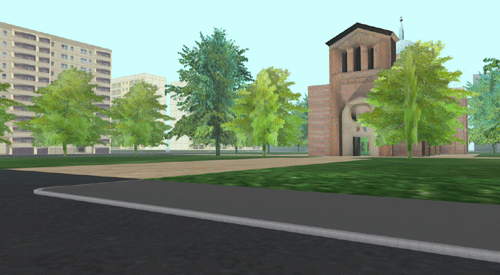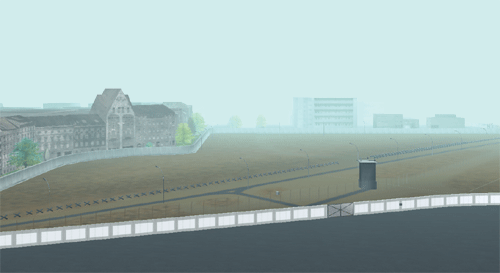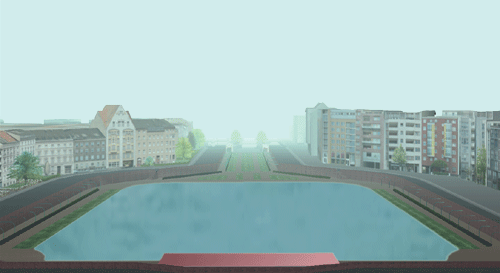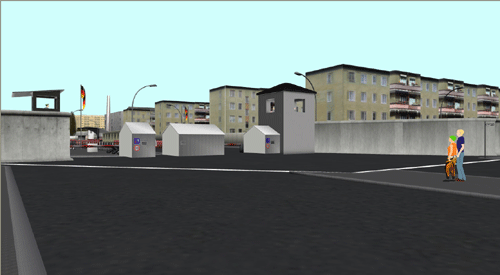
Heinrich-Heine-Strasse Border Crossing, seen from the West Berlin district of Kreuzberg. The residential buildings behind the Wall are border houses in East Berlin.
The couple standing at the left is on a "Berlin Wall tour" in West Berlin.
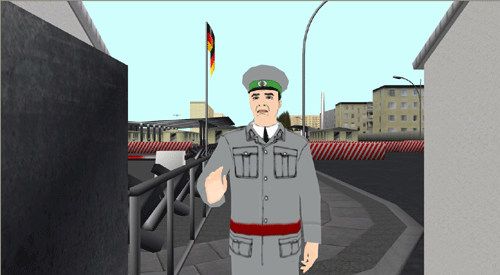
East German border guard at the Heinrich-Heine-Strasse Border Crossing. When in West Berlin, users becomes West Berlin residents – but at this checkpoint the only people allowed to cross were residents of West Germany , diplomats and vehicles with special permission for commerce and transport.
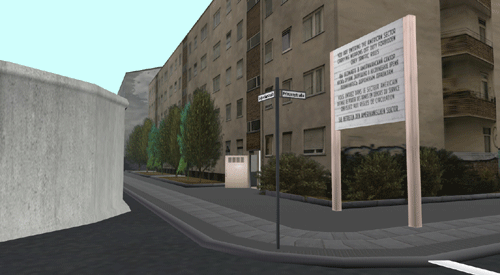
In the adjacent Sebastianstrasse, the sidewalk was actually East German territory, although the houses themselves were in West Berlin. (The Berlin Wall was usually built slightly inside the East German borders, so that West German authorities were not allowed to approach the Wall.)
The open door invites users to look inside ...
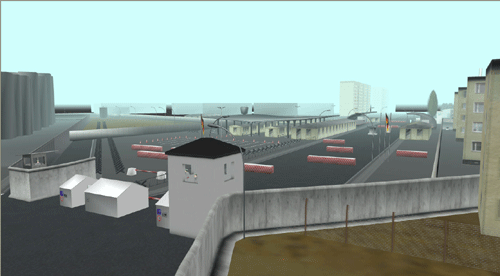
... for an aerial view out the window onto the Heinrich-Heine-Strasse Border Crossing.
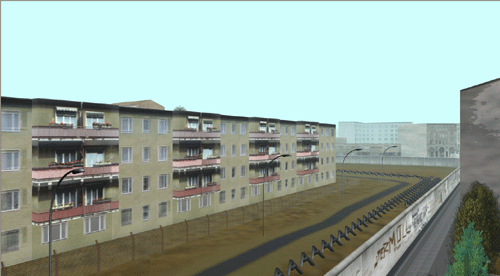
If users looks in the other direction, they have a good view of the western Wall, the Death Strip and the residential houses standing directly in the exclusion zone that surrounded the Berlin Wall on the East German side.
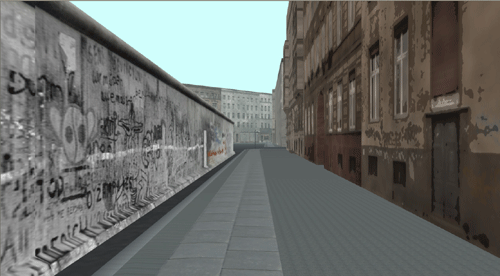
Going east in the Sebastianstrasse, West Berlin.
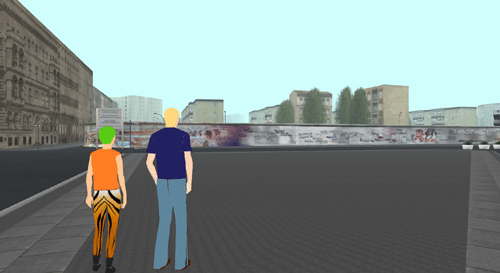
Our "Berlin Wall Tour" couple in Alfred-Doeblin-Platz. The time is mid-1980s.
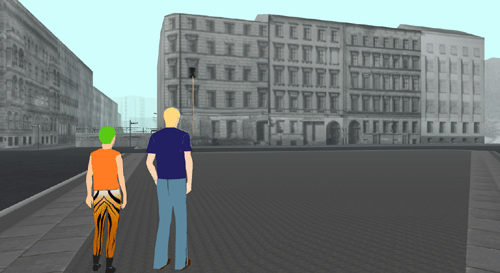
The woman, a West Berlin resident, tells her American visitor that in the 1960s, the boarded-up front facades of the border houses in East Berlin actually formed the western Wall. A family in the corner house was able to break open a window one night and escape. While she tells the story, the virtual world fades back into the 1960s.
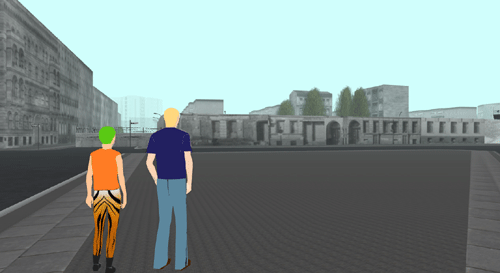
As a consequence of this escape, the border houses were torn down, but the ground floor facades were left standing into the 1970s as part of the western Wall.
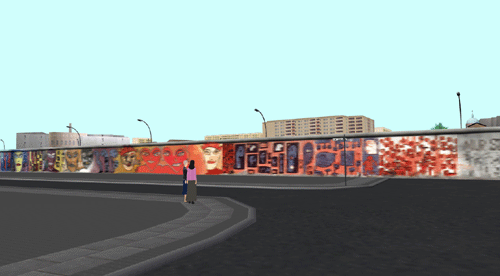
The world fades back into the 1980s, as we can see by the colorful graffitti on the western Wall. Further down the street, an older German woman tells her Turkish neighbor about the "Studio am Stacheldraht“ - the "Barbed-Wire Radio Studio" - that in the early 1960s broadcasted West German propaganda into East Berlin.
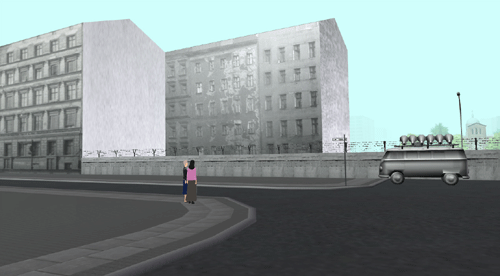
While the women talk, the virtual world fades back into the 1960s, as the border houses still stood as part of the western Wall. The VW bus from „Studio am Stacheldraht“ appears and begins a broadcast.
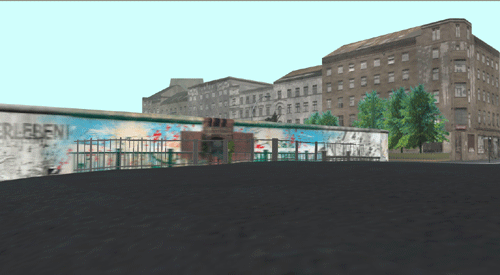
On the nearby Waldemar Bridge is our homage to the artist Yadegar Asisi, who had painted a trompe l'oeil image of the St. Michaels Church in East Berlin on the western Wall.
When users approach this image, they are taken on a trip forward in time to the 21st century, when the Wall was no more. In this time they are able to freely cross over into the former East Berlin .
East Berlin
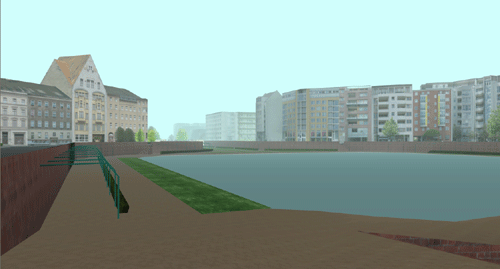
The trompe l'oeil image has brought us into the current time. As long as users stay within the - now invisible! - confines of the former Death Strip, they remain in the 21st century.
In the image above we are standing in the East Berlin district Mitte, looking back towards West Berlin over the Engelbecken Park. At the time of the Wall, the park was filled in and was part of the Death Strip. The houses on the left were in the West Berlin district of Kreuzberg. The houses on the right in the district Mitte were built after the Fall of the Wall, and stand directly in the former Death Strip.
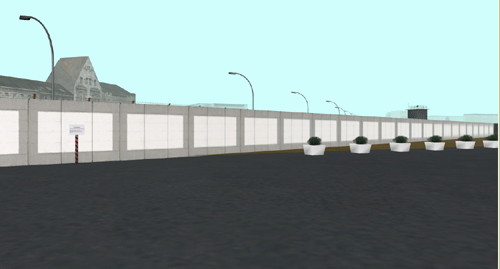
As soon as users cross out of the former confines of the Death Strip, they fall back into the 1980s and the Berlin Wall fades back in.
The image shows the same standpoint in East Berlin as the previous image, but now back in the 1980s. The view is blocked by the Hinterland Wall, the East Berlin side of the Wall.
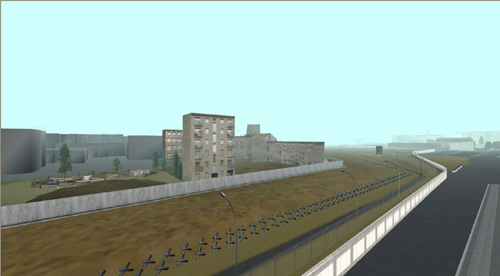
When users explore the East Berlin side of the virtual world, they will find an open door leading into the Hospital Mitte. This was one of the few places from which normal East Berliners who didn't live on the Wall themselves could look over the Hinterland Wall into the Death Strip.
What they saw on the other side of the Death Strip had little to do with the image of a 'golden' West Berlin - in Kreuzberg there was plenty of room to spare, so in the 1980s a children's farm was built at the corner of Adalbertstrasse and Bethaniendamm.
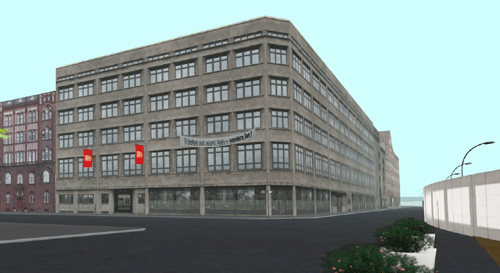
This section of East Berlin contains several architectural gems: the corner building was built by the famous architect Bruno Taut. During the time of the Wall, it housed the official East German union Free German Trade Union Federation (FDGB).
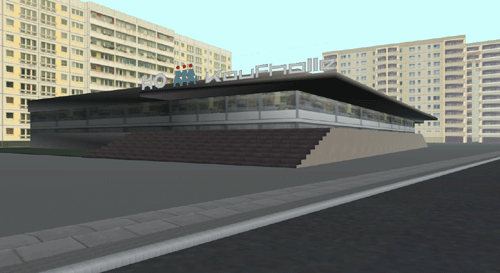
Although this part of East Berlin lay close to the Wall, it was in fact a much sought-after residential area, the Heinrich-Heine-Quarter. Directly after the war this was one of the first areas to undergo urban renewal, with the development of high-rise apartment buildings. The HO Kaufhalle department store provided shopping for the residents.
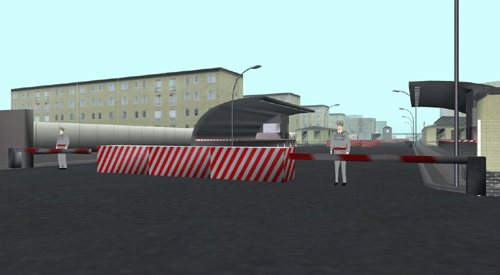
But around the corner from the Kaufhalle was another facet of daily life: the East Berlin side of the Heinrich-Heine-Strasse Border Crossing. The residential houses on the left are the same ones we saw from the West Berlin side of the checkpoint.
